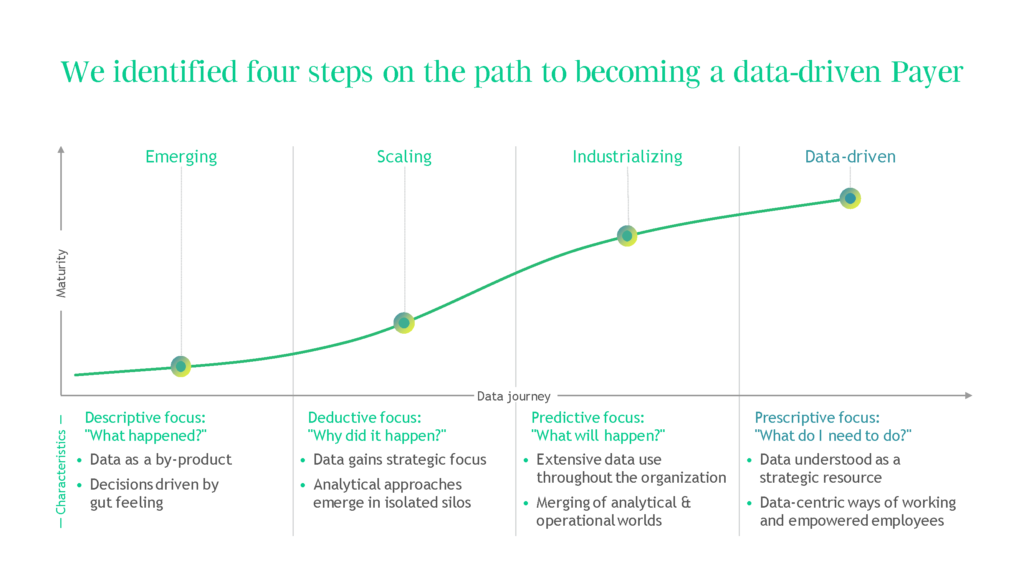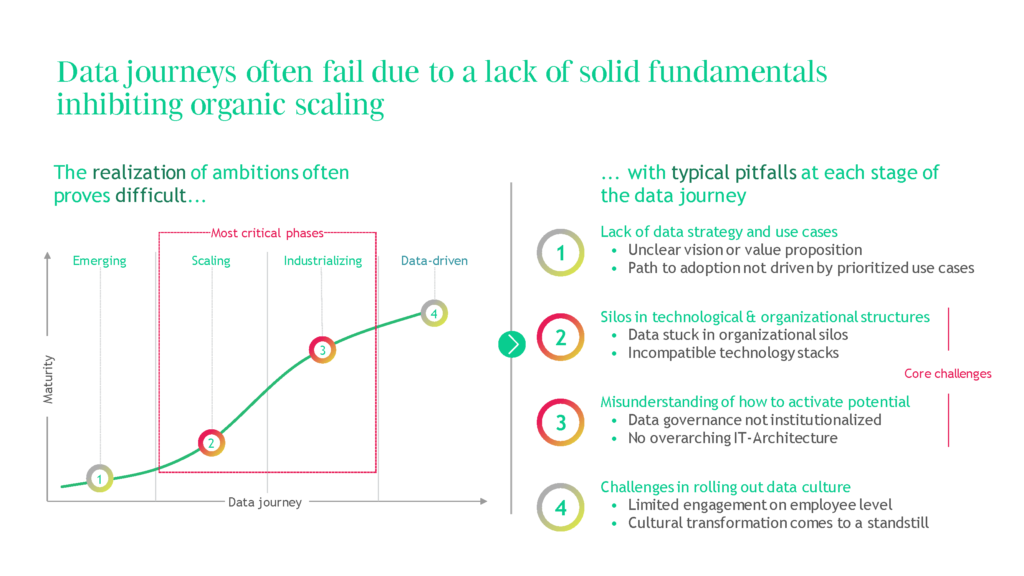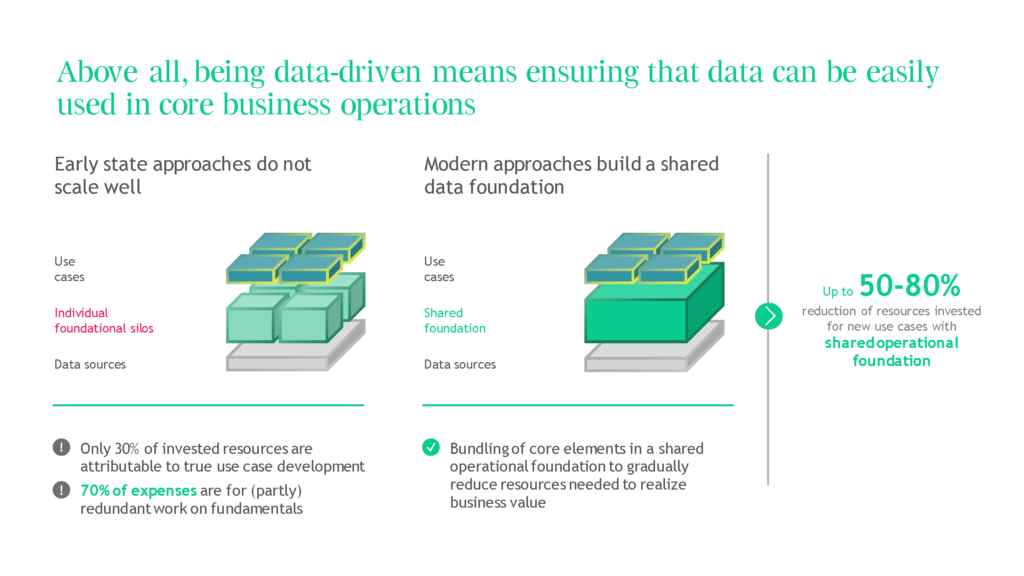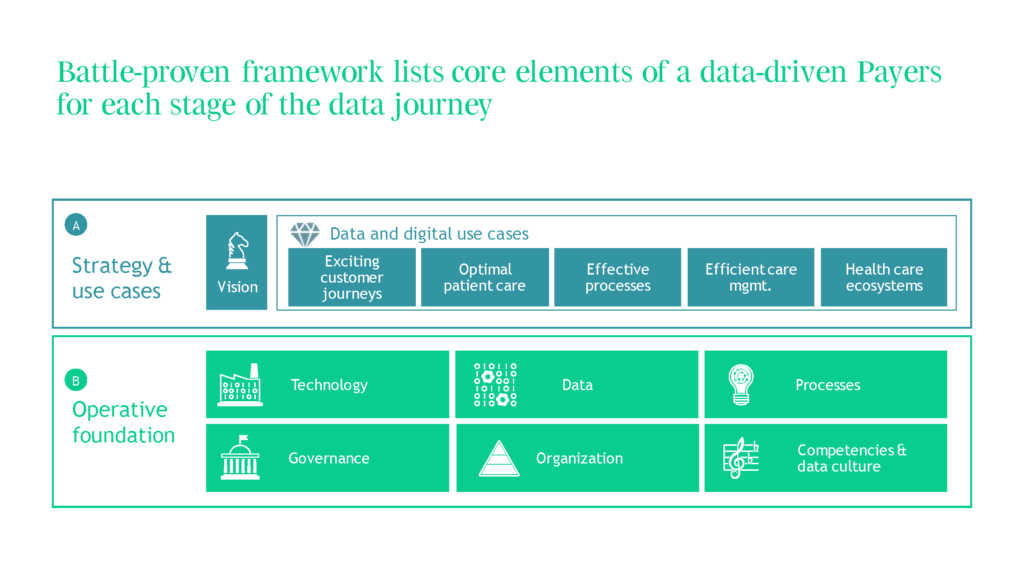In their current position, Payers have few options to differentiate themselves from the competition through their service portfolio alone. Additionally, changes in customer expectations – shaped by seamless experiences in other contexts such as online banking or web stores – also become the norm in health care spaces.
However, today’s focus for Payers continues to be increasing care and administrative costs: These are still the main contributors to rising premiums, the number one cause for customer attrition and ultimately market consolidation – no matter the alluring promises of digital offerings or customer services.
Big internet players such as Amazon, Apple, Facebook, Google as well as some new faces, are pushing into the market with digital health platforms and apps such as “Google Health”, “Facebook Preventive Health” or “PINGAN – GoodDoctor”. Their ambition: To become the primary contact for all health matters to patients. Payers run the risk of losing access to their customers – and consequently getting pushed into an invisible background role solely as transaction processors.
The transformation to a data-driven organization – as a critical step towards digitization – helps Payers to meet these market challenges and cement their competitiveness.

Why data-driven Payers are more successful
Payers enjoy a rather advantageous starting position – for the time being. They accumulated an important resource to shape the future: data. Through their core business, they were able to collect a sizeable data pool and gain practical know-how on handling sensitive health records along the way.
Furthermore, Payers control important interfaces to patients, health care providers, regulators and other stakeholders. To secure their role in the future as an integral part of patient journeys, Payers need to secure and evolve their position now – despite cost pressure – or face the consequences.
“Payers accumulated an important resource to shape the future: Data.”
"Leveraging technologies like advanced analytics, Artificial Intelligence, Big Data, as well as modern business intelligence solutions, Payers can tap into the potential of their precious accumulated data today and create value. Care management, service offerings and optimization of internal processes become focused. BCG Platinion’s case experience shows that significant value can be created in these areas and positively impact customer satisfaction:
-
Using advanced analytics can help monitor individual provider performances, detect inefficiencies, and consequently save up to 0.5% of care costs through strategic case intervention.
-
Detecting potential severe disease progression leveraging Big Data technology enables active steering of patients to improve health outcomes and reduce care costs by 10%.
-
Leveraging Artificial Intelligence to observe customer needs and initiating contact at the right time and through the right channel can double quantifiable customer satisfaction.
-
Making data available to be deployed in business processes enables automation through tools like rule-based straight-through processing or Artificial Intelligence and saves up to 50% of administrative costs – per process, depending on individual automation potential.
The journey to becoming data-driven
The journey towards a digital and data-driven organization typically progresses through several distinct stages. Companies who are just embarking on the transformation only leverage data assets selectively – commonly as a byproduct to implement isolated use cases. In contrast, a true data-driven Payer understands data as a strategic resource and fully centers its ways of working around it. This allows them to deliver fast and innovative results on all organizational levels.

When compared to other industries, Payers generally stand at the very beginning of the journey. Few exceptions exist in large players who already embarked on the transformational process with dedicated and holistic programs. Many experimented with data initiative on a small scale, but have run into common pitfalls inhibiting their progress:
-
Data-driven approaches emerge isolated in specific departments or are confined to selected divisions. These initiatives rarely work towards common goals and are therefore generally incompatible.
-
Individual initiatives implement specific solutions, with custom-prepared data sources. These approaches lack overarching guiding structures – organizationally and technologically – making them hard to scale.
Consequently, the system remains inefficient at large – and despite superficially progressing digitalization – and potential synergies remain untapped. Experience shows that up to 70% of effort per use case is redundant. Time to market remains slow. High-value use cases remain unchartered because implementation barriers are too high. Explorative approaches are simply impossible to realize.

In contrast, true data-driven organizations can ensure that all data can flexibly be deployed independent of use case specifics. Enabling capability is an operational foundation, which bundles critical enablers like technology, processes, organizational setups, or digital competencies. This common basis is available to all use cases and therefore reduces efforts by offering ready-to-use, best-practice foundations. Hence, up to 80% of reoccurring implementation tasks can be avoided.

Where to start?
BCG Platinion’s battle-proven approach was developed using tangible case experience from Payers as well as other industries. The framework enables the design of a holistic, but tailored transformation towards a data-driven future – in close co-creation with our clients. It is crucial to understand the transformation as an initiative on all levels – rather than just confining efforts solely to the IT departments. Two elements are critical for success:
-
Development of a clear data vision, backed by beacon use cases in line with typical concerns in the Payer industry
-
Definition of the required operational foundation, which enables these beacon use cases and more

Strategy & Use Cases
Formulating clear ambitions and guidelines creates a long-term vision linked to tangible strategic goals and expresses individual focus points for Payers when designing their data-driven future. Support by the executive board and top management helps to propagate the vision into the organization. This brings the transformation to life and motivates the strenuous journey.
Organizational silos can only be broken down if the strategic benefits and operational added value are clearly communicated and understood. Only in this manner can the team be inspired to drive the transformation forward.
Use cases are carefully selected to incrementally build up the operational foundation and demonstrate its value. Typical focus areas for Payers are, for example, exiting customer journeys for increasing loyalty, efficient care management to actively steer providers and improve health outcomes while reducing costs. Use cases with especially high-value yields become beacon use cases, to make data-driven approaches tangible and inspire the organization.

Operational foundation
To leverage economies of scale when implementing use cases, a sustainable operational foundation must be created quickly:
-
A resilient data platform to provide key technical capabilities, such as storing different forms of data or complementing flexible batch data streams with real-time integration patterns.
-
A universal data architecture to ensure fundamental compatibility between various data models and ultimately create trust in data.
-
Agile, user-centric processes for requirements engineering as well as rapid use case development.
-
Effective governance structures for managing data, assuring high quality standards, as well as for centrally anchoring data security practices.
-
Lean organizational structures to bundle data competencies and align teams to the data needs of the organization.
-
Competencies & data culture to cement data-driven ways of working across organizational levels and enable employees with appropriate data skills.
Conclusions
Today, Payers’ market position is being threatened. They are on the verge of losing critical interfaces to patients and providers. New players are entering the healthcare market with innovative digital services. Customer expectations are shifting. Payers are struggling to differentiate themselves through their service offering alone.
But there is still time to conquer these challenges: Payers must use their still advantageous position to create a data-driven future. Leveraging data-centric technologies like advanced analytics, Artificial Intelligence and Big Data allows for tailored communication with customers to open a dialogue about new opportunities. Active steering of care services helps to improve health outcomes, excite customers, and reduce cost.
Payers are struggling to adopt data-driven ways of working. They lack ways to scale their use cases organically and suffer from avoidable redundancies and siloed approaches. A shared data vision and a resilient operational foundation help them to address these challenges and sustainably implement digital and data use cases.
Please find the German version of this article here.
About the Authors
Dr. Simon Kirstein
Managing DirectorBerlin, Germany
Robert Daniel
Managing DirectorHead of Insurance Practice
Munich
Robert is the leader of BCG Platinion’s insurance practice. Throughout his long-running career, he has led various projects – from hands-on implementation to developing digital strategies and leading large-scale transformation programs. He leverages his extensive background in the insurance and healthcare payer market to help clients tap into their digital potential.
Jakob Gliwa
Associate DirectorBerlin, Germany
Jakob is an experienced IT, Artificial Intelligence and insurance expert. He led several data-driven transformations focusses on IT-modernization, organization and processes automation. Jakob leads BCG Platinion’s Smart Automation chapter and is a member of the insure practice leadership group.
Nico Müller
PrincipalZurich
Nico is an IT expert with strong practical experience in strategic transformations and their implementation. He supported various projects in Insurance and Payer spaces, where he enabled clients to activate their digital potentials – including by implementing data platforms. He is a core member of BCG Platinion’s insurance practice.


